CIMA - C2 Fundamentals of Financial Accounting
Подождите немного. Документ загружается.

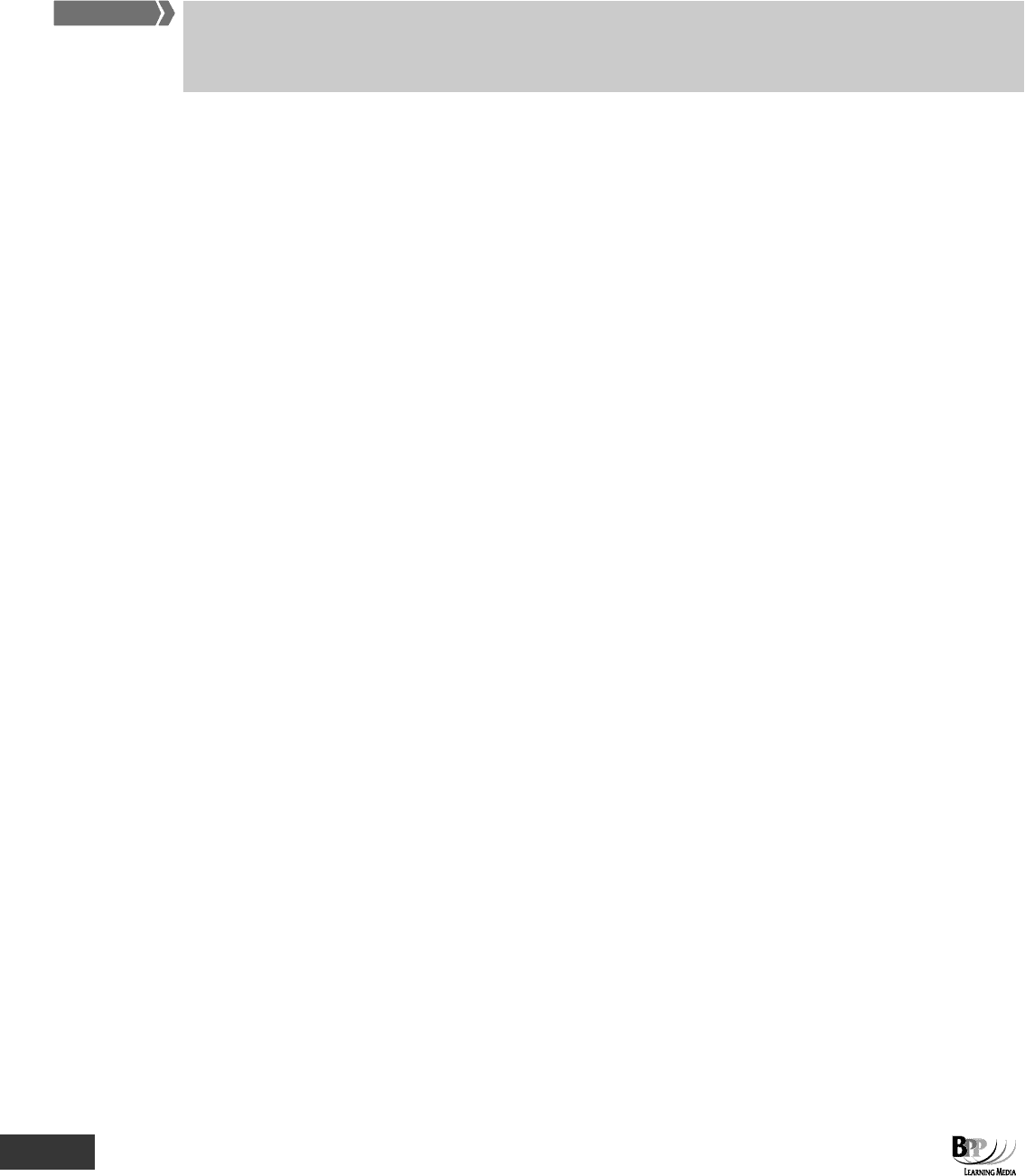
350 24: Statements of cash flows ⏐ Part D Interpretation of accounts
1 IAS 7 Statement of cash flows
Statements of cash flows are a useful addition to the financial statements of a company because accounting profit is not
the only indicator of performance. Statements of cash flows concentrate on the sources and uses of cash and are a
useful indicator of a company's liquidity and solvency.
It has been argued that 'profit' does not always give a useful or meaningful picture of a company's operations. Readers of a
company's financial statements might even be misled by a reported profit figure.
(a) Shareholders might believe that if a company makes a profit after tax, of say, $100,000 then this is the
amount which it could afford to pay as a dividend. Unless the company has sufficient cash available to
stay in business and also to pay a dividend, the shareholders' expectations would be wrong.
(b) Employees might believe that if a company makes profits, it can afford to pay higher wages next year.
This opinion may not be correct: the ability to pay wages depends on the availability of cash.
(c) Survival of a business entity depends not so much on profits as on its ability to pay its debts when they
fall due. Such payments might include income statement items such as material purchases, wages,
interest and taxation etc, but also capital payments for new non-current assets and the repayment of loan
capital when this falls due (for example on the redemption of loan stock).
From these examples, it may be apparent that a company's performance and prospects depend not so much on the
'profits' earned in a period, but more realistically on liquidity or cash flows.
1.1 Funds flow and cash flow
Some countries, either currently or in the past, have required the disclosure of additional statements based on funds
flow rather than cash flow. However, the definition of 'funds' can be very vague and such statements often simply
require a rearrangement of figures already provided in the statement of financial position and income statement. By
contrast, a statement of cash flows is unambiguous and provides information which is additional to that provided in the
rest of the accounts. It also lends itself to organisation by activity and not by statement of financial position
classification.
Statements of cash flows are frequently given as an additional statement, supplementing the statement of financial
position, income statement and related notes. The group aspects of statements of cash flows (and certain complex
matters) have been excluded as they are beyond the scope of your syllabus.
1.2 Objective of IAS 7
The aim of IAS 7 is to provide information to users of financial statements about an entity's ability to generate cash and
cash equivalents, as well as indicating the cash needs of the entity. The statement of cash flows provides historical
information about cash and cash equivalents, classifying cash flows between operating, investing and financing
activities.
1.3 Scope
A statement of cash flows should be presented as an integral part of an entity's financial statements. All types of entity
can provide useful information about cash flows as the need for cash is universal, whatever the nature of their revenue-
producing activities. Therefore all entities are required by the standard to produce a statement of cash flows.
FA
S
T F
O
RWAR
D
371465 www.ebooks2000.blogspot.com
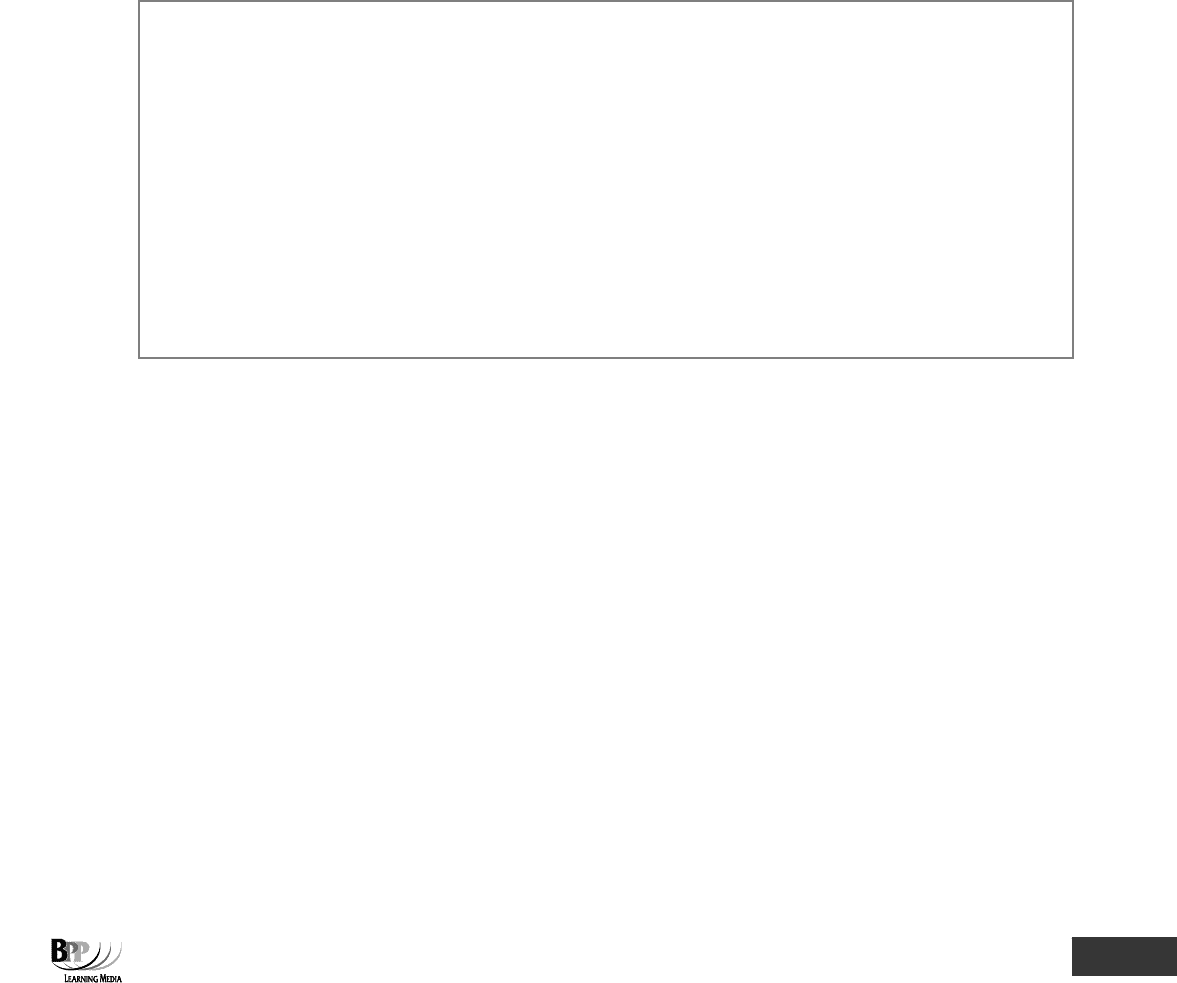
Part D Interpretation of accounts ⏐ 24: Statements of cash flows 351
1.4 Benefits of cash flow information
The use of statements of cash flows is very much in conjunction with the rest of the financial statements. Users can gain
further appreciation of the change in net assets, of the entity's financial position (liquidity and solvency) and the entity's
ability to adapt to changing circumstances by adjusting the amount and timing of cash flows. Statements of cash flows
enhance comparability as they are not affected by differing accounting policies used for the same type of transactions
or events.
Cash flow information of a historical nature can be used as an indicator of the amount, timing and certainty of future
cash flows. Past forecast cash flow information can be checked for accuracy as actual figures emerge. The relationship
between profit and cash flows can be analysed as can changes in prices over time. All this information helps
management to control costs by controlling cash flow.
1.5 Definitions
The standard gives the following definitions, the most important of which are cash and cash equivalents.
• Cash comprises cash on hand and demand deposits.
• Cash equivalents are short-term, highly liquid investments that are readily convertible to known amounts of cash
and which are subject to an insignificant risk of changes in value.
• Cash flows are inflows and outflows of cash and cash equivalents.
• Operating activities are the principal revenue-producing activities of the enterprise and other activities that are
not investing or financing activities.
• Investing activities are the acquisition and disposal of non-current assets and other investments not included in
cash equivalents.
• Financing activities are activities that result in changes in the size and composition of the equity capital and
borrowings of the entity. (IAS 7)
1.6 Cash and cash equivalents
The standard expands on the definition of cash equivalents: they are not held for investment or other long-term
purposes, but rather to meet short-term cash commitments. To fulfil the above definition, an investment's maturity date
should normally be three months from its acquisition date. It would usually be the case then that equity investments
(ie shares in other companies) are not cash equivalents. An exception would be where redeemable preference shares
were acquired with a very close redemption date.
Loans and other borrowings from banks are classified as investing activities. In some countries, however, bank
overdrafts are repayable on demand and are treated as part of an enterprise's total cash management system. In these
circumstances an overdrawn balance will be included in cash and cash equivalents. Such banking arrangements are
characterised by a balance which fluctuates between overdrawn and credit.
Movements between different types of cash and cash equivalent are not included in cash flows. The investment of
surplus cash in cash equivalents is part of cash management, not part of operating, investing or financing activities.
1.7 Presentation of a statement of cash flows
IAS 7 requires statements of cash flows to report cash flows during the period classified by operating, investing and
financing activities.
Key terms
372465 www.ebooks2000.blogspot.com
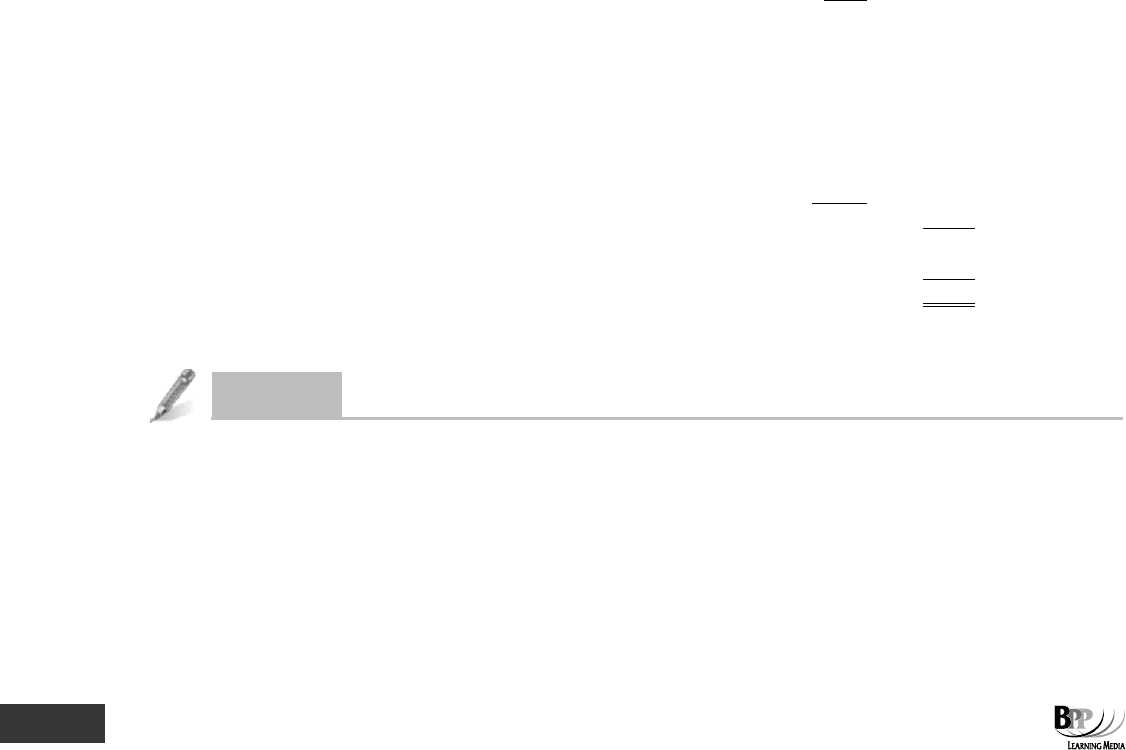
352 24: Statements of cash flows ⏐ Part D Interpretation of accounts
1.8 Example: Simple statement of cash flows
Flail Co commenced trading on 1 January 20X1 with a medium-term loan of $21,000 and a share issue which raised
$35,000. The company purchased non-current assets for $21,000 cash, and during the year to 31 December 20X1
entered into the following transactions.
(a) Purchases from suppliers were $19,500, of which $2,550 was unpaid at the year end.
(b) Wages and salaries amounted to $10,500, of which $750 was unpaid at the year end.
(c) Interest on the loan of $2,100 was fully paid in the year and a repayment of $5,250 was made.
(d) Sales turnover was $29,400, including $900 receivables at the year end.
(e) Interest on cash deposits at the bank amounted to $75.
(f) A dividend of $4,000 was proposed as at 31 December 20X1.
You are required to prepare a historical statement of cash flows for the year ended 31 December 20X1.
Solution
FLAIL CO
STATEMENT OF CASH FLOWS FOR
THE YEAR ENDED 31 DECEMBER 20X1
$
$
Cash flows from operating activities
Cash received from customers ($29,400 – $900)
28,500
Cash paid to suppliers ($19,500 – $2,550)
(16,950)
Cash paid to and on behalf of employees ($10,500 – $750)
(9,750)
Interest paid
(2,100)
Interest received
75
Net cash flows from operating activities
(225)
Investing activities
Purchase of non-current assets
(21,000)
$
$
Financing activities
Issue of shares
35,000
Proceeds from medium-term loan
21,000
Repayment of medium-term loan
(5,250
)
Net cash flows from financing activities
50,750
Net increase in cash and cash equivalents
29,525
Cash and cash equivalents at 1 January 20X1
–
Cash and cash equivalents at 31 December 20X1
29,525
Note that the dividend is only proposed and so there is no related cash flow in 20X1.
Question
Statement of cash flows I
The managers of Flail Co have the following information in respect of projected cash flows for the year to 31 December
20X2.
(a) Non-current asset purchases for cash will be $3,000.
(b) Further expenses will be:
(i) purchases from suppliers – $18,750 ($4,125 owed at the year end).
(ii) wages and salaries – $11,250 ($600 owed at the year end).
(iii) loan interest – $1,575.
373465 www.ebooks2000.blogspot.com
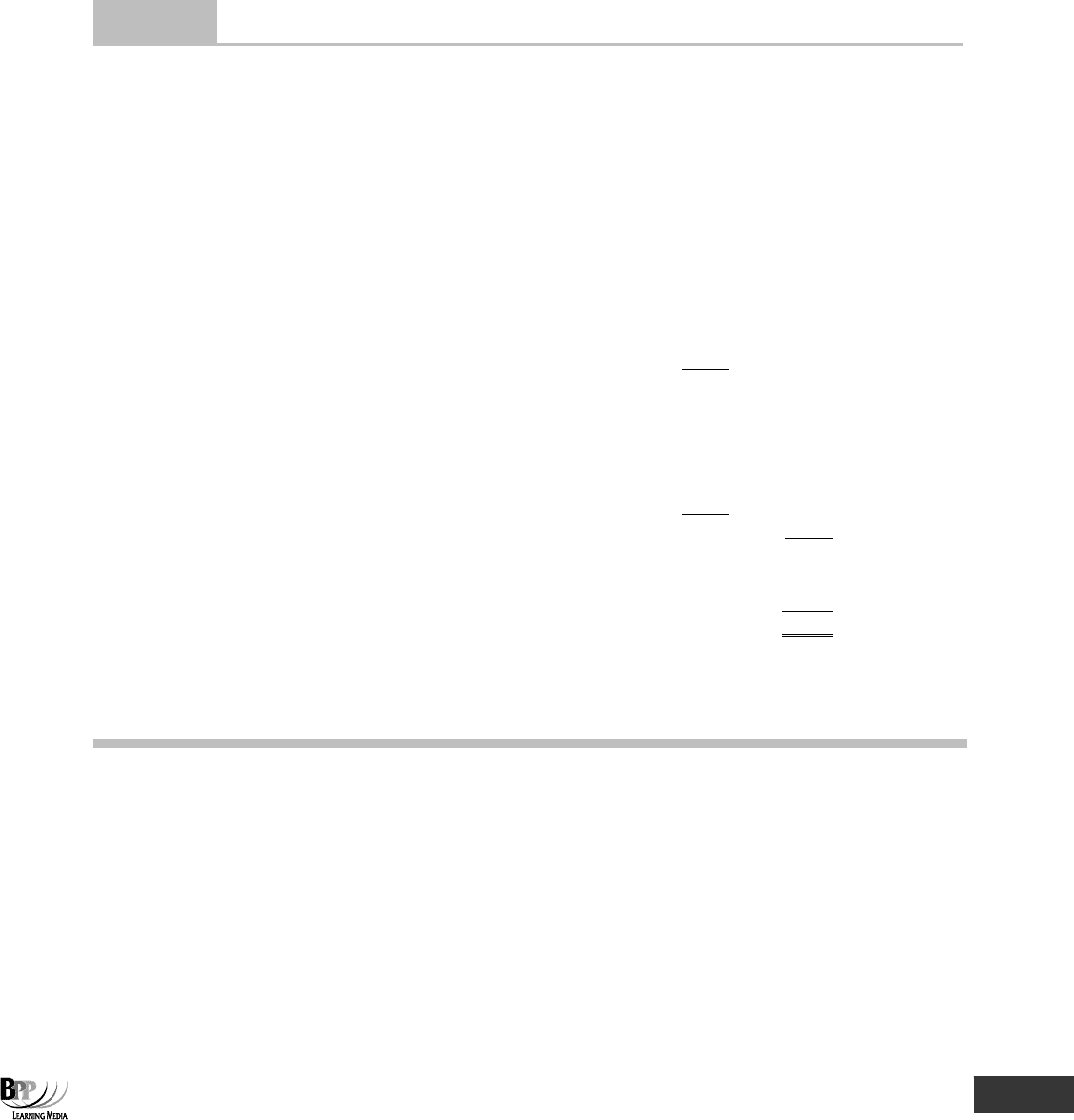
Part D Interpretation of accounts ⏐ 24: Statements of cash flows 353
(c) Turnover will be $36,000 ($450 debtors at the year end).
(d) Interest on bank deposits will be $150.
(e) A further capital repayment of $5,250 will be made on the loan.
(f) A dividend of $5,000 will be proposed and last year's final dividend paid.
(g) Income taxes of $2,300 will be paid in respect of 20X1.
Prepare the cash flow forecast for the year to 31 December 20X2.
Answer
FLAIL CO
STATEMENT OF FORECAST CASH FLOWS FOR
THE YEAR ENDING 31 DECEMBER 20X2
$
$
Cash flows from operating activities
Cash received from customers
36,450
($36,000 + $900 – $450)
Cash paid to suppliers ($18,750 + $2,550 – $4,125)
(17,175)
Cash paid to and on behalf of employees
($11,250 + $750 – $600)
(11,400)
Interest paid
(1,575)
Interest received
150
Taxation
(2,300
)
Net cash flows from operating activities
4,150
Investing activities
Purchase of non-current assets
(3,000)
Financing activities
Repayment of medium-term loan
(5,250)
Dividend payment
(4,000
)
Cash flows from financing activities
(9,250
)
Forecast net decrease in cash and cash
equivalents at 31 December 20X2
(8,100)
Cash and cash equivalents as at 31 December 20X1
29,525
Forecast cash and cash equivalents as at 31 December 20X2
21,425
The manner of presentation of cash flows from operating, investing and financing activities depends on the nature of the
enterprise. By classifying cash flows between different activities in this way users can see the impact on cash and cash
equivalents of each one, and their relationships with each other. We can look at each in more detail.
1.8.1 Operating activities
This is perhaps the key part of the statement of cash flows because it shows whether, and to what extent, companies can
generate cash from their operations. It is these operating cash flows which must, in the end pay for all cash outflows
relating to other activities, ie paying loan interest, dividends and so on.
Most of the components of cash flows from operating activities will be those items which determine the net profit or
loss of the enterprise, ie they relate to the main revenue-producing activities of the enterprise. The standard gives the
following as examples of cash flows from operating activities.
374465 www.ebooks2000.blogspot.com

354 24: Statements of cash flows ⏐ Part D Interpretation of accounts
(a) Cash receipts from the sale of goods and the rendering of services
(b) Cash receipts from royalties, fees, commissions and other revenue
(c) Cash payments to suppliers for goods and services
(d) Cash payments to and on behalf of employees
Certain items may be included in the net profit or loss for the period which do not relate to operational cash flows, for
example the profit or loss on the sale of a piece of plant will be included in net profit or loss, but the cash flows will be
classed as investing.
1.8.2 Investing activities
The cash flows classified under this heading show the extent of new investment in assets which will generate future
profit and cash flows. The standard gives the following examples of cash flows arising from investing activities.
(a) Cash payments to acquire property, plant and equipment, intangibles and other non-current assets,
including those relating to capitalised development costs and self-constructed property, plant and
equipment
(b) Cash receipts from sales of property, plant and equipment, intangibles and other non-current assets
(c) Cash payments to acquire shares or debentures of other enterprises
(d) Cash receipts from sales of shares or debentures of other enterprises
(e) Cash advances and loans made to other parties
(f) Cash receipts from the repayment of advances and loans made to other parties
1.8.3 Financing activities
This section of the statement of cash flows shows the share of cash which the enterprise's capital providers have
claimed during the period. This is an indicator of likely future interest and dividend payments. The standard gives the
following examples of cash flows which might arise under these headings.
(a) Cash proceeds from issuing shares
(b) Cash payments to owners to acquire or redeem the enterprise's shares
(c) Cash proceeds from issuing debentures, loans, notes, bonds, mortgages and other short or long-term
borrowings
(d) Cash repayments of amounts borrowed
1.9 Reporting cash flows from operating activities
The standard offers a choice of method for this part of the statement of cash flows.
(a) Direct method: disclose major classes of gross cash receipts and gross cash payments
(b) Indirect method: net profit or loss is adjusted for the effects of transactions of a non-cash nature, any
deferrals or accruals of past or future operating cash receipts or payments, and items of income or
expense associated with investing or financing cash flows
The direct method is the preferred method because it discloses information, not available elsewhere in the financial
statements, which could be of use in estimating future cash flows. The example below shows both methods.
375465 www.ebooks2000.blogspot.com

Part D Interpretation of accounts ⏐ 24: Statements of cash flows 355
1.9.1 Using the direct method
There are different ways in which the information about gross cash receipts and payments can be obtained. The most
obvious way is simply to extract the information from the accounting records. This may be a laborious task, however,
and the indirect method below may be easier. The example and question above used the direct method.
1.9.2 Using the indirect method
This method is undoubtedly easier from the point of view of the preparer of the statement of cash flows. The net profit
or loss for the period is adjusted for the following.
(a) Changes during the period in inventories, operating receivables and payables
(b) Non-cash items, eg depreciation, provisions, profits/losses on the sales of assets
(c) Other items, the cash flows from which should be classified under investing or financing activities.
A proforma of such a calculation is as follows and this method may be more common in the exam.
$
Profit before interest and tax (income statement)*
X
Add depreciation
X
Loss (profit) on sale of non-current assets
X
(Increase)/decrease in inventories
(X)/X
(Increase)/decrease in receivables
(X)/X
Increase/(decrease) in payables
X/(X
)
Cash generated from operations
X
Interest (paid)/received
(X)
Income taxes paid
(X)
Net cash flows from operating activities
X
* Take profit before tax and add back any interest expense
It is important to understand why certain items are added and others subtracted. Note the following points.
(a) Depreciation is not a cash expense, but is deducted in arriving at the profit figure in the income statement.
It makes sense, therefore, to eliminate it by adding it back.
(b) By the same logic, a loss on a disposal of a non-current asset (arising through underprovision of
depreciation) needs to be added back and a profit deducted.
(c) An increase in inventories means less cash – you have spent cash on buying inventory.
(d) An increase in receivables means the company's receivables have not paid as much, and therefore there is
less cash.
(e) If we pay off payables, causing the figure to decrease, again we have less cash.
1.9.3 Indirect versus direct
The direct method is encouraged where the necessary information is not too costly to obtain, but IAS 7 does not demand
it. In practice, therefore, the direct method is rarely used. It could be argued that companies ought to monitor their cash
flows carefully enough on an ongoing basis to be able to use the direct method at minimal extra cost.
1.10 Interest and dividends
Cash flows from interest and dividends received and paid should each be disclosed separately. Each should be
classified in a consistent manner from period to period as either operating, investing or financing activities.
Dividends paid by the enterprise can be classified in one of two ways.
(a) As a financing cash flow, showing the cost of obtaining financial resources.
376465 www.ebooks2000.blogspot.com

356 24: Statements of cash flows ⏐ Part D Interpretation of accounts
(b) As a component of cash flows from operating activities so that users can assess the enterprise's ability
to pay dividends out of operating cash flows.
1.11 Taxes on income
Cash flows arising from taxes on income should be separately disclosed and should be classified as cash flows from
operating activities unless they can be specifically identified with financing and investing activities.
Taxation cash flows are often difficult to match to the originating underlying transaction, so most of the time all tax cash
flows are classified as arising from operating activities.
1.12 Components of cash and cash equivalents
The components of cash and cash equivalents should be disclosed and a reconciliation should be presented, showing
the amounts in the statement of cash flows reconciled with the equivalent items reported in the statement of financial
position.
It is also necessary to disclose the accounting policy used in deciding the items included in cash and cash equivalents,
in accordance with IAS 1 Presentation of financial statements, but also because of the wide range of cash management
practices worldwide.
1.13 Other disclosures
All enterprises should disclose, together with a commentary by management, any other information likely to be of
importance, for example:
(a) restrictions on the use of or access to any part of cash equivalents;
(b) the amount of undrawn borrowing facilities which are available; and
(c) Cash flows which increased operating capacity compared to cash flows which merely maintained
operating capacity.
1.14 Example of a statement of cash flows
In the next section we will look at the procedures for preparing a statement of cash flows. First, look at this example,
adapted from the example given in the standard (which is based on a group and therefore beyond the scope of your
syllabus).
377465 www.ebooks2000.blogspot.com

Part D Interpretation of accounts ⏐ 24: Statements of cash flows 357
1.14.1 Direct method
STATEMENT OF CASH FLOWS (DIRECT METHOD)
YEAR ENDED 20X7
$m
$m
Cash flows from operating activities
Cash receipts from customers
30,330
Cash paid to suppliers and employees
(27,600
)
Cash generated from operations
2,730
Interest paid
(270)
Income taxes paid
(900
)
Net cash from operating activities
1,560
Cash flows from investing activities
Purchase of property, plant and equipment
(900)
Proceeds from sale of equipment
20
Interest received
200
Dividends received
200
Net cash used in investing activities
(480)
Cash flows from financing activities
Proceeds from issuance of share capital
250
Proceeds from long-term borrowings
250
Dividends paid*
(1,290
)
Net cash used in financing activities
(790
)
Net increase in cash and cash equivalents
290
Cash and cash equivalents at beginning of period (Note)
120
Cash and cash equivalents at end of period (Note)
410
* This could also be shown as an operating cash flow
378465 www.ebooks2000.blogspot.com

358 24: Statements of cash flows ⏐ Part D Interpretation of accounts
1.14.2 Indirect method
STATEMENT OF CASH FLOWS (INDIRECT METHOD)
YEAR ENDED 20X7
$m
$m
Cash flows from operating activities
Net profit before taxation
3,570
Adjustments for:
Depreciation
450
Investment income
(500)
Interest expense
400
Operating profit before working capital changes
3,920
Increase in trade and other receivables
(500)
Decrease in inventories
1,050
Decrease in trade payables
(1,740
)
Cash generated from operations
2,730
Interest paid
(270)
Income taxes paid
(900
)
Net cash from operating activities
1,560
Cash flows from investing activities
Purchase of property, plant and equipment
(900)
Proceeds from sale of equipment
20
Interest received
200
Dividends received
200
Net cash used in investing activities
(480)
Cash flows from financing activities
Proceeds from issuance of share capital
250
Proceeds from long-term borrowings
250
Dividends paid*
(1,290
)
Net cash used in financing activities
(790
)
Net increase in cash and cash equivalents
290
Cash and cash equivalents at beginning of period (Note)
120
Cash and cash equivalents at end of period (Note)
410
* This could also be shown as an operating cash flow
The following note is required to both versions of the statement.
Note: Cash and cash equivalents
Cash and cash equivalents consist of cash on hand and balances with banks, and investments in money market
instruments. Cash and cash equivalents included in the statement of cash flows comprise the following statement of
financial position amounts.
20X7
20X6
$m
$m
Cash on hand and balances with banks
40
25
Short-term investments
370
95
Cash and cash equivalents
410
120
The company has undrawn borrowing facilities of $2,000 of which only $700 may be used for future expansion.
379465 www.ebooks2000.blogspot.com
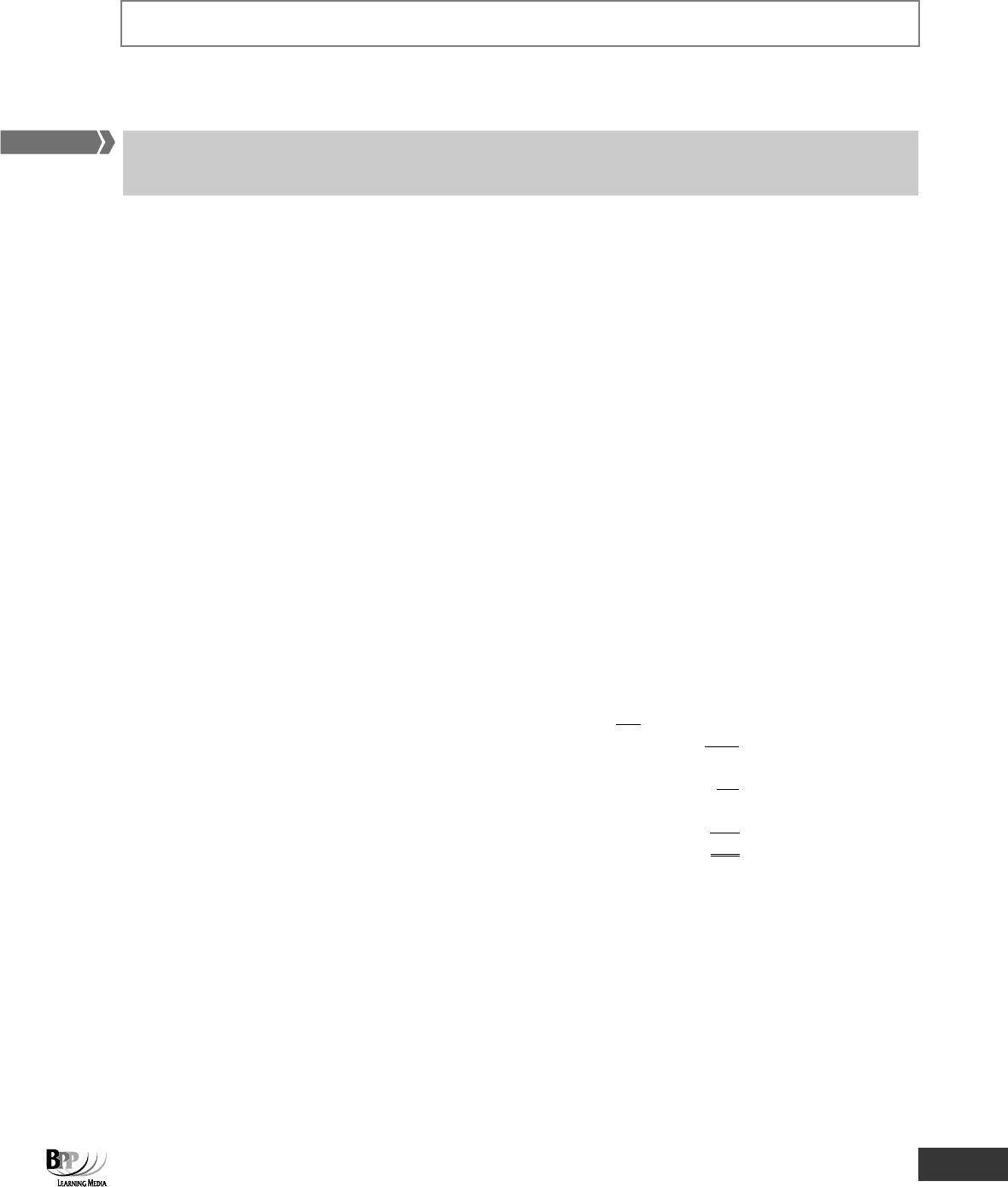
Part D Interpretation of accounts ⏐ 24: Statements of cash flows 359
In practice, statements of cash flows are usually prepared using the indirect method.
2 Preparing a statement of cash flows
You need to be aware of the format of the statement as laid out in IAS 7. Setting out the format is the first step. Then
follow the step-by-step preparation procedure.
In essence, preparing a statement of cash flows is very straightforward. You should therefore simply learn the format
and apply the steps noted in the example below. Note that the following items are treated in a way that might seem
confusing, but the treatment is logical if you think in terms of cash.
(a) Increase in inventory is treated as negative (in brackets). This is because it represents a cash outflow;
cash is being spent on inventory.
(b) An increase in receivables would be treated as negative for the same reasons; more receivables means
less cash.
(c) By contrast an increase in payables is positive because cash is being retained and not used to settle
accounts payable. There is therefore more of it.
2.1 Example: Preparation of a statement of cash flows
Colby Co's income statement for the year ended 31 December 20X2 and statements of financial position at 31 December
20X1 and 31 December 20X2 were as follows.
COLBY CO
INCOME STATEMENT FOR THE YEAR ENDED 31 DECEMBER 20X2
$'000
$'000
Sales
720
Raw materials consumed
70
Staff costs
94
Depreciation
118
Loss on disposal of non-current asset
18
(300
)
420
Interest payable
(28
)
Profit before tax
392
Taxation
(124
)
Profit for the period
268
FA
S
T F
O
RWAR
D
Assessment
focus point
380465 www.ebooks2000.blogspot.com
